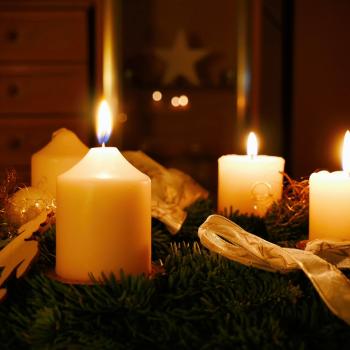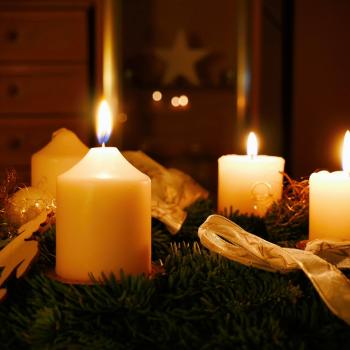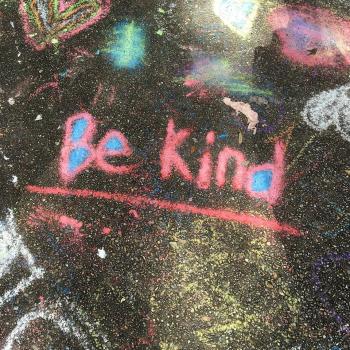Hope.
It’s a thing with feathers, or so Emily Dickinson once wrote. It can be a thing that lives within us, just as it can be a thing that gives us life, that becomes our breath. It can become a thing we pray for when the life raft on which we float starts to deflate one crashing, crushing wave at a time.

Of course, the optimist in me oftentimes wants to believe that hope itself is a one and done type of deal. Too often I can believe that if I can just sprinkle a little bit of hope into a conversation, a piece of writing, a soundbite of a podcast episode, that all of this hope will somehow be enough.
But Advent doesn’t offer an easy way out: instead, the season serves as an invitation to enter in to darkness and wait. It serves as an invitation to search for those tiny cracks of light, to essentially believe (or hope, as one might call it) that the tiny cracks of light will inevitably, eventually show up.
Here’s how one pastor puts it:
Advent requires us to face our doubts, our fears, and insecurities. Advent requires us to empower the weak, the vulnerable, and the ones who see no way out of the dark. It is calling us to bring hope, joy, peace, and a light in the midst of great darkness.
The season invites us to come face-to-face with those real things that cause us pain …and to continue to stay with the pain, as as we simultaneously hold onto hope.
The irony is that this is oftentimes the hardest thing to do, of course.
As a Seven on the Enneagram, the last thing I want to do is experience pain. I run from it like long-distance marathon running is my job, not realizing the sacred profundity of accepting our own pain, of entering into another person’s pain, or of experiencing the depth of pain and injustice in the world around us.
But it makes me wonder if there’s anything more powerful than accepting pain in the first place.
After all, when pain and hope intermingle in our souls, real, actual change eventually starts to happen – maybe because we come face-to-face with the brutal ways of honesty. We realize our own ugliness.
But I think that’s also where hope enters in, because in a way, hope forces us to think beyond ourselves. Hope invites us to imagine and to dwell on the already but not yet, on what could be and what’s to come and the what if of an unbroken world.
For those of you who subscribe to my newsletter, you may have read the recent post about singing a new song.
Last week, I stood on stage for a TED Talk-like event at the Peninsula Conflict Resolution Center. When the event coordinators asked me to speak, they said, “Cara, we don’t need you to speak on your book. That’s old news. We get it. We want you to speak on how the conversations you’ve had over the last year have CHANGED you. That’s what we want to hear about.”
So, I spoke about realizing that this song was not about me.
Because when it came to launching my book into the world nearly a year ago, I knew enough to know that if the white lady (who was me) stood up on stage to talk about race, then the white lady would be missing the point. After all, this “song” about running toward love and racial justice, about how the power of love helped me see color, well, it was never about me.
And all of those speaking and conversational events? Also not about me, not in the least.
But the new song was about listening and it was about learning from my sisters and brothers of color, who shared the stage with me. The new song was about real conversation in real time, about real conversations of justice, race and privilege. And sometimes the new song was uncomfortable and sometimes the new song made us cry, but always, always, the new song was about entering in and inviting others into conversation. It was bravely showing up and speaking the truth in love, even when it hurt, even when we felt pain.
The new song was about Myisha and Julie, Sally and Anita and Jordan, Mitali and Velynn and Michelle, Jemar and Granddaddy and Abrem, Michael and Kevin and Roy. And sometimes, it was about Cara, too.
But always, it was about leaning into the collective power of story and, together, letting our stories change a broken world around us.
Maybe it was about doing what we’re already invited to do in the season of Advent: face our doubts, our fears, our insecurities, as Pastor Gricel reminds us. Empower the the weak and the vulnerable, who can see no way out of the dark, through our stories and through our words, so that we might bring a little bit of hope and light into the darkness.
At least, that’s what I hope.
So, what say you?
—
Just giving you a little bit of HOPE to chew on in this Advent season. So, tell me: what is hope in this season to you?
*Post contains Amazon Affiliate links













